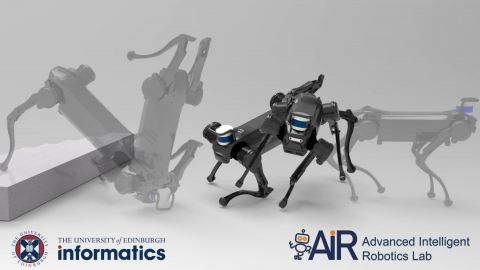Paper published in Science Robotics
How to make robots behave like animals in nature is the subject of a long exploration by robotics experts around the world. Dogs or cats don't put too much thought into how they move. They rely on instinct to adapt to the changes in nature, jumping up and down in complex terrain performing flexible movements. But this is not easy for intelligent robots, such as quadrupeds.
"In traditional robot control, algorithms are programmed based on a specific task, which means that if the robot encounters a new scenario that it is not programmed for, it has huge difficulties to handle novel situations. This greatly reduces the real world applications" says Kai Yuan, a CDT student and the student representative of the 2017 cohort.
As the lead author of a recently published research paper in Science Robotics as the cover paper, Kai explained that "to achieve versatile locomotion, robots need motor skills that can adapt to previously unseen situations, and our team has proposed a Multi-Expert Learning Architecture (MELA) that combines clusters of previously single-skilled neural networks through a hierarchical architecture and achieve dynamic fusion of multiple skills by activating and blending individual experts online."
Read more of the paper on: https://robotics.sciencemag.org/content/5/49/eabb2174
Image Credit: Yang et al., Sci Robot. 5, eabb2174 (2020)


